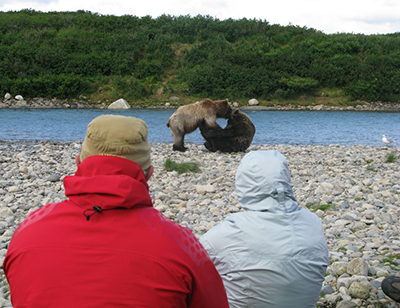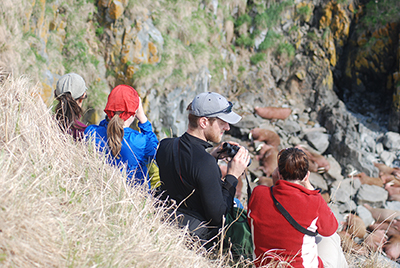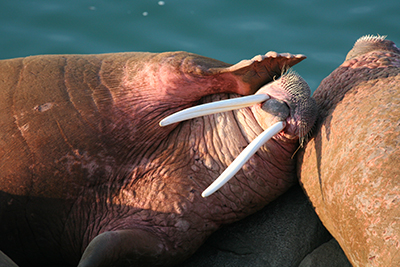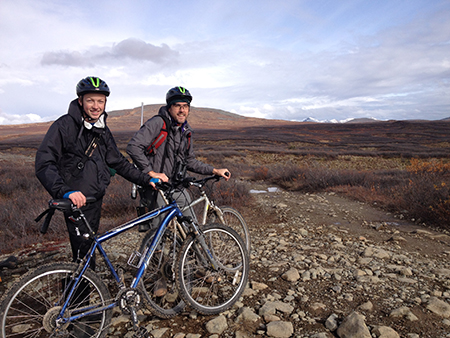Alaska Fish & Wildlife News
April 2023
Alaska's Special Areas

If you want to observe walruses roar, swim, and quarrel - or watch brown bears feed, tussle, and nurse their young - you should visit Alaska’s Special Areas. The Alaska State Legislature has designated 32 Special Areas, with more than 3.2 million acres of some of Alaska’s most productive fish and wildlife habitats. The Special Areas include 12 State Refuges, 17 Critical Habitat Areas, and three Sanctuaries: Walrus Islands, McNeil River, and Stan Price , home to walruses, bears and other wildlife.

The Alaska Department of Fish and Game’s Lands and Refuges Program is the largest state-managed program of its kind in the country.
“Most people think of the Alaska Department of Fish and Game as only a fish and wildlife management agency, not as a land management agency, but it manages both critters and lands,” said Joe Meehan, coordinator of the Department’s Lands and Refuges Program, which includes the Special Areas.
Meehan’s career started 40 years ago and he worked in national parks, national wildlife refuges, national forests and in Alaska’s state parks before moving to the Alaska Department of Fish and Game 25 years ago. He’s been the coordinator for the Lands and Refuges Program for about 22 years.
“I had a wake-up call when I started working for the program after realizing how much abuse and incompatible activities were going on at some of our refuge sites,” he said. People were dumping garbage, tires, furniture, appliances, construction waste, abandoned and stolen cars (including a stolen bus) at some refuges. People were using sites for bonfires, parties, and target practice which resulted in hazardous lead contamination, making them unsafe for wildlife and people. All of this left a mess that needed to be cleaned up. Due to the sheer number of dumped items and the vast acreage of the State Special Areas there was a lot of work to be done. Meehan started working with community partners including refuge friends’ groups, conservation organizations, businesses, industries, hunting organizations, scouts, school groups and others to clean up these areas.

“Stewardship is key,” Meehan said. “It is important that the public takes ownership and pride and wants to help protect these Special Areas.”
The groups created a sense of partnership, community, and stewardship and cleaned up 220 dumped cars, 2,000 tires, 350 large appliances, and 350 tons of miscellaneous debris. Not only did they clean up the Special Areas they also added access facilities such as parking lots, trails, and boardwalks. Signs were installed to help people find the special areas. Restrooms, benches, and interpretive panels were also added.

Meehan is retiring this spring and has helped to leave a legacy of usable and clean Special Areas for people to recreate and enjoy. “I am interested in protecting fish and wildlife and their habitats and to encourage people to use and enjoy them,” he said. He hopes they in turn will help keep these areas nice for generations to come. Check out the Special Areas near you.
Sue Rodman has been hired as the new coordinator for the Lands and Refuges Program and plans to continue the community engagement that has been created.
Subscribe to be notified about new issues
Receive a monthly notice about new issues and articles.
